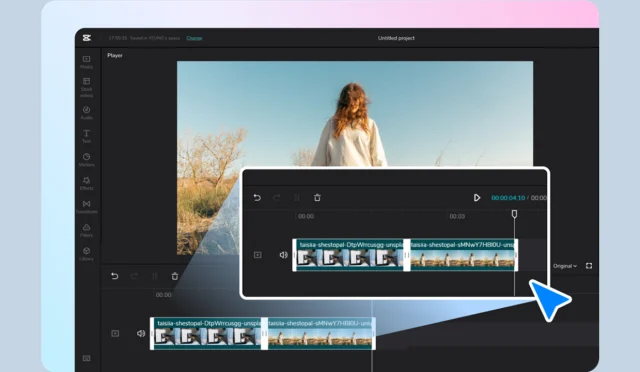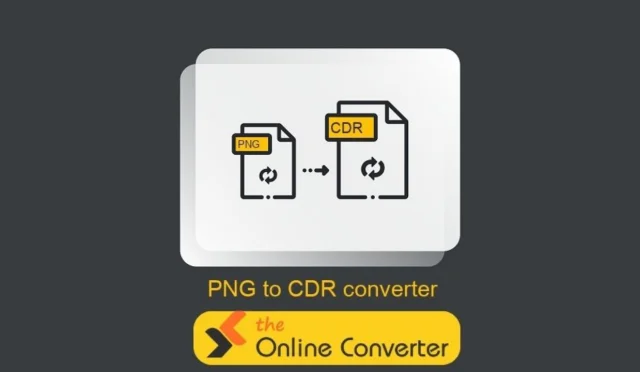What is a Rapid Prototyping Service?
As the name implies, rapid prototyping is a group of fabrication techniques that create scale models or functional prototypes from a computer-aided design (CAD) file, specifically in three-dimensional form. Typically, this is done through additive techniques such as 3D printing, but other subtractive techniques, like CNC machining, can be integrated. Rapid prototyping allows designers and engineers to evaluate shape, fit, and function early in the development cycle by turning digital designs into physical objects quicker and more accurately than ever, cutting lead time and facilitating faster iterations.
View Leading Rapid Prototyping Service Provider in China – Kingsun details to get into the details
Key Benefits of Using a Prototyping Service
Engaging in a rapid prototyping service has many advantages including:
Accelerated Development Cyles– Unlike traditional ways of manufacturing, prototypes can be produced and analyzed in a fraction of the time, which allows for faster decision making and iterative improvements.
Cost Efficiency– Expense is minimized with rapid prototyping because of identifying design flaws at an early stage that eliminates the need for reworking designs or halting the manufacturing process at later stages.
High Precision and Customization– Prototypes are manufactured with a high degree of accuracy and advanced techniques which allows for specific requirements to be achieved.
Enhanced Communication– Gaps in understanding between clients, stakeholders, and other members of the team are solved using physical prototypes, which results to better collaboration and clearer expectations.
How Rapid Prototyping Fits into the Manufacturing Process
Prototyping at the early stages of product development when the product is still being designed is facilitated through rapid prototyping techniques. In the design stage, once a concept is complete, we create a prototype to validate the design tangibly. Prototyping helps in eliminating any functional and aesthetic flaws, gathering feedback, refining specifications, and validation before moving onto full-scale production. The iterative circle of design and prototyping guarantees that the quality of the product meets standards while taking into account user satisfaction. In summary, rapid prototyping helps in transitioning from ideas to production processes while structurally optimizing resources while minimizing risks.
How to Choose the Right Rapid Prototyping Service?
Evaluating Manufacturing Capabilities
As with any other service, it is important to evaluate the manufacturing capabilities of a rapid prototyping service provider, especially in relation to their financial quote. Assess if the company has equipped itself with modern technologies like 3D printing, CNC machining, injection molding, and other contemporary fabrication techniques. Also, look into the types of materials they support, as some companies deal with metals while others may deal with polymers or fiber-reinforced composite materials. It is also prudent to check if the service provider can achieve all the measurement and finish specifications relevant to your project. Evaluating their capabilities will ensure that you meet both your internal technical requirements and quality benchmarks.
Cost estimation has been made easy with the use of the Internet. One can obtain quotes from different prototyping companies and instantly compare their costs and services. Most of these platforms offer further breakdowns of the prices according to the material chosen, the number of units to be produced, and the execution time. Be cautious about additional expenses because they may drastically influence the budget. It is possible to obtain better quotes without delaving on quality of time by comparing the quote estimates from different providers. With clearly defined pricing strategies, providers make the comparison easier.
Lead Times: Anticipated Times for Different Services
The lead time for prototyping services usually differs based on the design’s complexity, the specific manufacturing technique used, and the capability of the contractor. A case in point is that the turnaround times for additive processes such as 3D printing is usually within 1-5 working days, contingent on the project’s scope. More conventional approaches, such as injection molding, tend to have longer lead times because of the requisite preparation for the tools, though they are preferable for bulk production runs. A service provider’s commitment regarding lead time should always be evaluated in relation to project timelines. To avoid trouble down the line, confirm delivery windows prior to project commencement for detailed account planning.
What Technologies are Used in Rapid Prototyping?
Exploring 3D Printing Technologies in Rapid Prototyping
Additive manufacturing or 3D printing, has become inseparable with rapid prototyping due to its capability for layer-by-layer construction of models from digital files. This provides flexibility and speed unparalleled by traditional methods. In 3D printing, Fused Deposition Modeling (FDM) and Stereolithography (SLA) are the more common methods. FDM uses a thermoplastic filament, while SLA cures liquid resin with a UV light. Another common method is Selective Laser Sintering (SLS), which focuses a laser on powder particles to fuse them. When considering the requirements of the prototype’s material, surface finish, and complexity, each method also has its distinct pros. The healthcare, automotive, and aerospace industries, among others, need precise, low-volume prototypes tailored to their needs. With little setup time and the capacity to create intricate geometries, 3D printing is ideal for these sectors.
CNC Machining as One of the Methods of Prototyping Services
CNC machining is considered one of the most useful technologies in rapid prototyping, specifically because it provides high accuracy and is compatible with different materials. As a type of subtraction manufacturing, CNC machining involves the use of computer-controlled equipment to fabricate tools, metals, plastics, and composites precisely into specific designs. It provides great accuracy and smooth surfaces, which is necessary for functional mechanical prototypes that undergo rigorous testing or load-bearing exercises. Furthermore, CNC supports a wide variety of materials, including those that cannot be processed by additive manufacturing. CNC technology is beneficial to projects that require high precision, performance, endurance, and intricate machining.
Creating Prototypes with the Use of Injection Molding
Creating prototypes of injection-molded components is simple with rapid injection molding as it combines incubation and production manufacturing. It cuts down lead times for setting up tools and creating molds by employing soft tooling materials like aluminum and basic molding construction techniques, which are different from traditional methods. This process is ideal for prototypes that need to be tested under realistic production conditions or with materials intended for final products. Such prototypes allow engineers to test part fit and material suitability and function effortlessly without extensive resource allocation. Rapid injection molding provides a great solution for the need to produce quality parts in short periods leading to decreased time products are developed.
How Does Rapid Prototyping Transition to Production?
From Prototype to Production: Key Steps
In an effort to achieve a certain level of quality, productivity, and manufacturability, transitioning from prototype to production entails a clearly defined set of steps. Initially, design and prototype verification is performed to ensure the integrity of the part under operational conditions. This is followed by tooling preparation and refinement, where improvements are made based on prototype feedback. Equally important is the selection of the material, which has to suit the purpose of the now production-ready prototype as well as the intended end use and application. Lastly, vertical integration, or mass volume production of the subassemblies, is done while maintaining the preceding standard of quality.
Strategies for low-volume production
Low-volume production sits strategically in between prototyping and mass production and offers optimizations in cost and flexibility. This strategy allows businesses to manufacture pre-defined sets of parts to test market reception, fulfill custom orders, or conduct further testing. Advanced manufacturing techniques, like CNC milling, urethane casting, and rapid injection molding, are easily applicable within the scope of low-volume production due to their flexibility in material and overall manufacturing efficiency. Implementation of this approach ensures the lowest possible expenditures for tooling, a shortened market entry time, and higher agility toward any design modifications.
Manufacturing Alternatives for Prototypes
Transformative custom manufacturing practices disingenuously bypass the complexity of multistage processes and reclaim 3D CAD parts using additive volumetric techniques. These processes are bound by extensive attributes, incorporating 3D printing, multi-axis machining, and even hybrid manufacturing. Customization allows accommodating complex features, specialized material requirements, intricate геometrical configurations, and other deficiencies unattainable with off-the-shelf solutions. Custom solutions are also flexible enough to address design changes while maintaining correctness to the intents of the specified control in the final components. This supports further innovation in the product, enabling innovation alongside the development lifecycle.
What are the Applications of Rapid Prototyping Services?
Industries Benefiting from Prototyping Services
Services providing rapid prototyping aid numerous industries through innovation enablement, time-to-market reduction, and design risk reduction. In the automotive industry, prototyping is done for a variety of components, such as engine parts, aerodynamic models, and interior fittings, which are tested prior to mass production. In the same vein, aerospace manufacturers utilize prototypes to test materials for critical components for structural integrity, thermal properties, and material for other essential parts that are critical. The medical field also aids greatly in the use of prototypes for surgical tools, prosthetics, and diagnostic equipment while ensuring functionality alongside safety. Design precision and accuracy are highly important across industries such as consumer electronics, industrial machinery, and even fashion, which rely on design prototyping for accuracy.
Aiming to accomplish a successful prototyping project, the case studies provided below detail some notable works.
In the automotive sector an electric vehicle battery enclosure was designed by an international automaker using rapid prototyping services. The development process was streamlined by the use of high-performance polymer materials coupled with 3D printing which changed their product testing and iteration processes. The development time was later found to be reduced by 30 percent.
An aerospace company implemented a combination of CNC machining with Additive manufacturing to create prototypes of turbine blades. These high fidelity prototypes were subjected to thermal and mechanical testing. The tests conducted were aimed at design optimization focusing on the operational safety and efficiency of these prototypes.
Medical Devices: A wearable health care monitoring device was developed by a health care technology startup using rapid prototyping techniques to make it possible to obtain working samples. This approach provided feedback from clinicians and other users, improving ergonomics and usability and speeding up the FDA approval process.
Functional Prototypes vs. Production Parts
Although production parts and functional prototypes may seem identical, their intent, method of fabrication, and approach to manufacturing are quite different. A functional prototype is a model that is constructed to represent a system and its subsystems. It is called a “concept proof” to check if the design intent, ergonomics, and functionality can be achieved. These are usually made from polymers using Additive Manufacturing or soft tooling techniques. On the other hand, production parts are components finalized in form and function, designed to sustain long-term wear and tear along with meeting the requirements of given regulations. They are subjected to rigorous processes in material selection, quality assurance, and manufacturing like injection molding or precision machining. Having knowledge of these differences help clarify the design development phases so that appropriate steps and decision-making will be taken concerning objectives, available resources, and schedules.
How to Optimize Your Prototype Development Process?
Utilizing On-Demand Manufacturing Services for Fast Lead Times
Harnessing innovation while improving lead times maintain critical importance in any product development cycle. Beyond design and engineering services, on-demand manufacturing services offer even more value in achieving these benchmarks – flexibility, scale, access to advanced technologies, and no require need for large upfront investments. With these services, teams can improve operational bottlenecks, accelerate prototyping and production workflows, and meet tight project deadlines.
Recommendations to optimize turnaround time:
Ease DFM (Design for Manufacturability) Requirements: Clearly documented tolerances paired with unambiguous verbiage, along with straightforward part sketches centered around features, will minimize the potential for discrepancies in the manufacturing process.
Communicate Effectively: Strong relationships with suppliers enable open lines of communication that can expedite most processes. Their significance is even more apparent when sourcing suppliers with excellent lead time policies.
Implement Contemporary Prototyping Techniques: Technologies such as additive manufacturing (3D printing), CNC machining, and sheet metal fabrication stand out due to their rapid iteration cycles coupled with unparalleled accuracy, perfect for aggressive timelines.
Material Availability and Batch Scheduling: Contain the uncontrolled acquisition delays by restricting the order of materials needed and grouped ahead of time. Material lead times should be taken into consideration as well during pre-planning stages.
In-House and Prototyped Outsourcing Services
The selection of one over the other impacts both the lead time as well as the project dynamics, highlighting the importance of careful consideration.
In-House Prototyping:
This option eliminates dependence on vendors for expeditious changes by providing prompt control over processes. It proves most useful when a business already possesses the necessary equipment and expertise.
Outsourced Prototyping:
It allows partnering with external specialized providers and offers access to advanced technologies and greater scalability. This approach is more appropriate when dealing with complex projects that cannot be undertaken with existing in-house resources.
With the right combination of these strategies tailored to specific project needs, teams can optimize their workflows to attain fast and efficient product development cycles.







